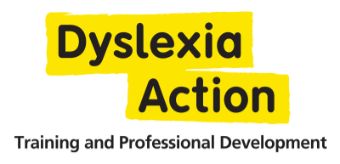The Prevalence of Dyslexia – Natalie Houalla
Madeleine Watson
Natalie Houalla is a Senior Instructional Designer with Real Group and she is also the Chair of Governors as well as SEND and Inclusion Link Governor, for her local primary school. She is currently working towards an MA in Educational Neuroscience.
Here, Natalie explores the thorny issue of estimating the prevalence of dyslexia.
The question of prevalence in dyslexia is widely and consistently posed, and yet evades a decisive response.
Depending on which platform or resource you consult, you may come across answers as varied as, ‘from 3-5%’ to ‘1 in 5’ or a rounded ‘20%’. Currently, the British Dyslexia Association (BDA) states that 10% of the UK population are dyslexic, of which 4% are severely affected. However, the original source of these statistics is difficult to trace.
The 1970 British Cohort Study: 2004 data, focused on the assessment of characteristics associated with dyslexia, and initial estimates of dyslexia in 1986 were around 2-4%. However, this follow-up of the same cohort (when participants were 34), estimates that 16% of the population are at high risk of dyslexia, with 4% of this group falling into the high-risk category. Interestingly, this report also refers to the 10% and 4% statistics, quoting BDA, Bangor Dyslexia Test and Dyslexia Action (then called Dyslexia Institute (DI), illustrating that we were all making use of this unsourced statistic.
The Yale Center for Dyslexia and Creativity in the US, on the other hand, states that it affects 20% of the population and notes that it is the most prevalent of all neurocognitive disorders.
Quite often, prevalence is determined by how we evaluate dyslexia. While dyslexia is diagnosed by Assessment Practising Certificate (APC) holders using guidance provided by the SpLD Assessment Standards Committee (SASC), research teams evaluating prevalence may be less rigorous about how they define caseness.
The British Cohort Study 1986 data was based on the Bangor Dyslexia Screener and the 2004 data on the Dyslexia Adult Screening Test (DAST), in which four subtests were administered and an index score was calculated. Using screeners in this way seems likely to result in an overestimate, as screening tests can often pick up individuals with poor literacy, without dyslexia.
Defining dyslexia
The difficulty in quantifying the prevalence of dyslexia may very well be attributed to variability in the descriptive and diagnostic language surrounding this neurodivergence.
Previous definitions have regarded dyslexia as ‘an unexpected failure in literacy skills, despite adequate ability and conventional classroom instruction’. However, practice is changing and many assessors now refer to The Rose Report’s (2013) statement that: “Dyslexia occurs across the range of intellectual abilities. It is best thought of as a continuum, not a distinct category, and there are no clear cut-off points.” This demonstrates how definitions of dyslexia change and evolve, meaning that prevalence rates may not be accurate.
Furthermore, as literacy difficulties exist along a spectrum, they can be tricky to pin down making severity and prevalence challenging to measure. SASC is currently addressing this issue by taking an in-depth focus on how dyslexia is defined, and producing a paper which aims to capture current thinking which should be available in late summer 2022.
Recent work by Wagner et al. (2020), suggests that a definitive answer to the question of prevalence is seemingly elusive due to the continuous distribution of reading performance and predictors of dyslexia, together with the varied nature of samples of poor readers.
The article states that samples of poor readers are a mixture of individuals whose reading is consistent with or expected based on their performance in other academic areas and in language, and individuals with dyslexia whose reading is not consistent with, or expected, based on their other performance.
The study replicated and extended a new approach for determining the prevalence of dyslexia, using model based meta-analysis and simulation: three main results were found.
1. The prevalence of dyslexia is better represented as a distribution that varies as a function of severity as opposed to any single-point estimate.
2. Samples composed of belowaverage readers will contain more expected, poor readers than unexpected or dyslexic readers.
3. Individuals with dyslexia can be found across the reading spectrum as opposed to only at the lower tail of reading performance.
International perspective
These prevalence rates can also vary across different languages. Many of the prevalence studies are carried out largely in America and the UK but China has a visual reading system and prevalence statistics are estimated to be as low as 3% (Lin, et al., 2020).
So, what is the key takeaway here? An oxymoronic ‘inconclusive conclusion’, if you will. When referencing or being guided by these statistics, we must be aware of limitations and use caveats. We cannot assume that a 10% estimate is universal or verified, and we should be wary of the reliability of statistics, while remaining mindful of the prominent grey areas in quantifying dyslexia prevalence.



